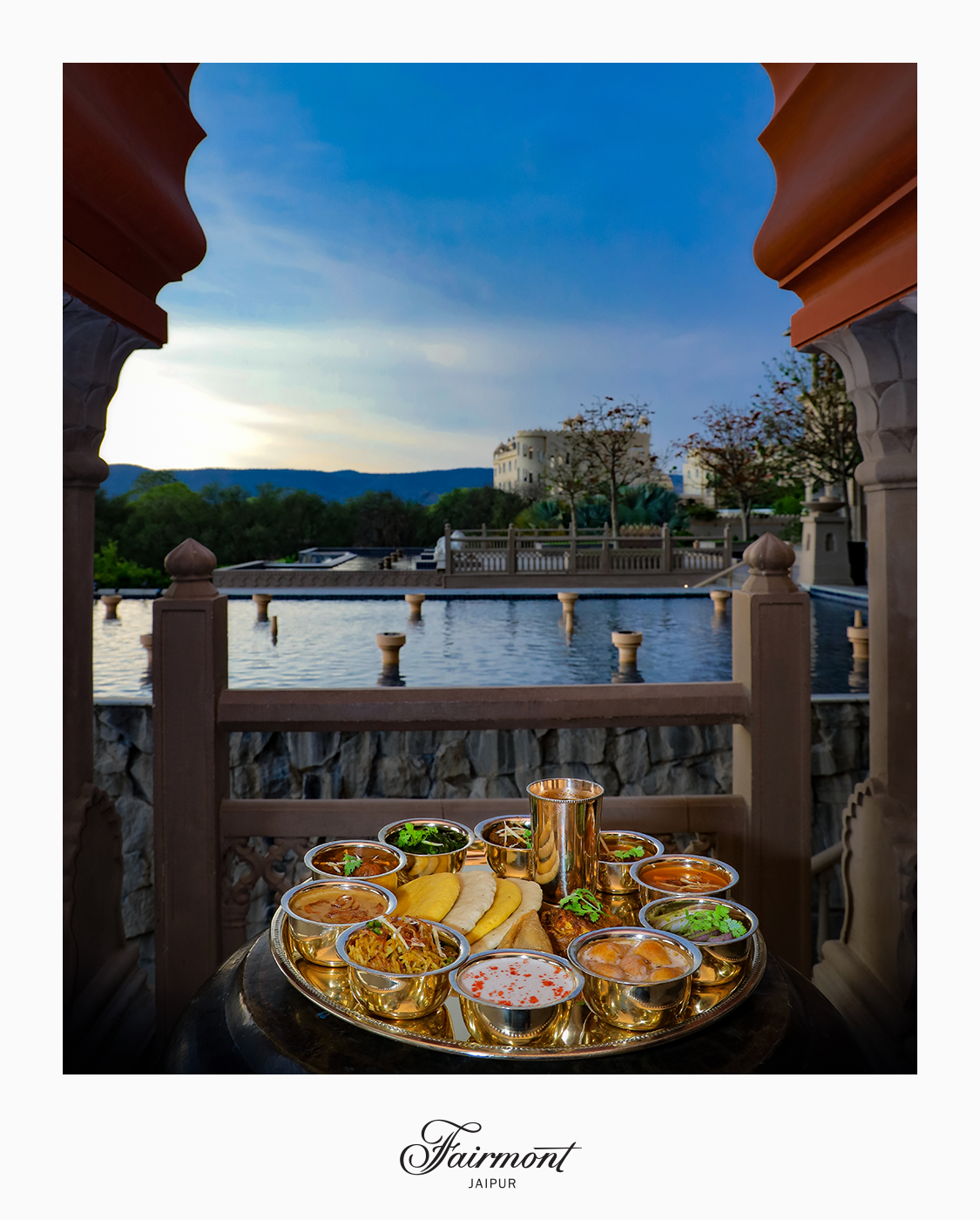India’s regal history has a culinary connection too that is now making a comeback in restaurants that are reviving royal food.
It was an unusually cold September morning when I met with Chef Love Mathur at Sunset Terrace the in-house restaurant of the beautiful Fateh Prakash Palace, from the HRH Group of Hotels at Udaipur. As I settled into my comfortable chair overlooking the stunning Lake Pichola, Chef gave me a small tutorial on all things related to royal food. Well after all a bit of royalty can add a dash of glamour even if it is on your plate. “Our typical royal silver thaali is served with an assortment of 10-15 items with a mix of local and exotic ingredients to complete thaali. We use both gold and silver warq on the food in the royal thaali. We follow the recipes made in the royal kitchen and replicate the same at the restaurant. One of the items on the menu Rajasthani Jungli Maas is a traditional (100+ year old) meat dish which was prepared from the day’s catch when kings went on hunting expeditions. There is an interesting story behind this dish as it was a dish that was made for the maharajas once they returned from their hunting expeditions. We use good quality mutton [11 to 12 months old] Ghee, Whole Red Chilli and Kashimiri Saffron and it is had with Makki Ki Roti, Phulka and Thotdi (Rajasthani whole wheat bread),” says Chef Mathur, Corporate Chef, HRH Group of Hotels, The City Palace, Udaipur India’s palaces are not just architecturally magnificent but are also known for their royal kitchens and exotic gastronomic food. In fact, food from the palaces of India has always had an ethereal quality about them, perhaps elitist and also inaccessible in a sense. However all of this is changing slowly but surely with niche restaurants serving royal inspired food as well as curated pop ups that showcase royal cuisine.
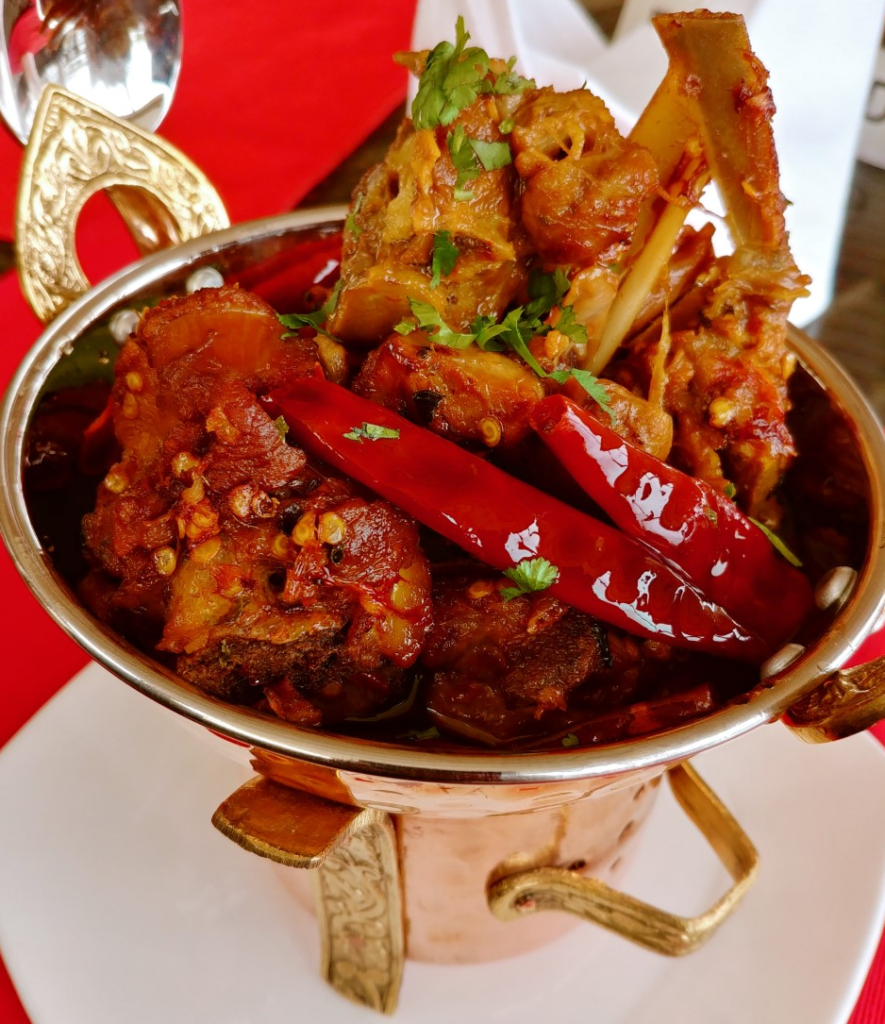
Gastronomy Unlimited
Royal cuisine has a lot of history and has some of the best dishes invented in Indian cuisine. Of late Indian cuisine has become contemporary keeping in mind the current trends in the market. However, it is extremely important that royal food is preserved and showcased to the current generation. The royal cuisines of India however cover more of Rajasthan, Mughlai and Wazwan and are spread across the country’s numerous erstwhile royal kingdoms. The royal palaces maintained a kitchen where they had the best cooks to prepare food for the kings of those days. “While designing the menu we had our chefs go to these regions and worked with some of the finest chefs and understand the secret recipe which they followed. They got back and did multiple trials on the dishes and have mastered in the cuisine now. I also have worked with many Chefs who have worked for Royal houses and learn the trade from them. But it is also very important that we bring back those dishes in the authentic ways to the market and showcase our chefs skills as there have been lot of efforts put by our team to go into the roots of the cuisine and master in it. We grind all our spices in the hotel and all masalas as well,” says Sous Chef Akhilesh Pathak, Indian Durbar, Conrad Bengaluru.
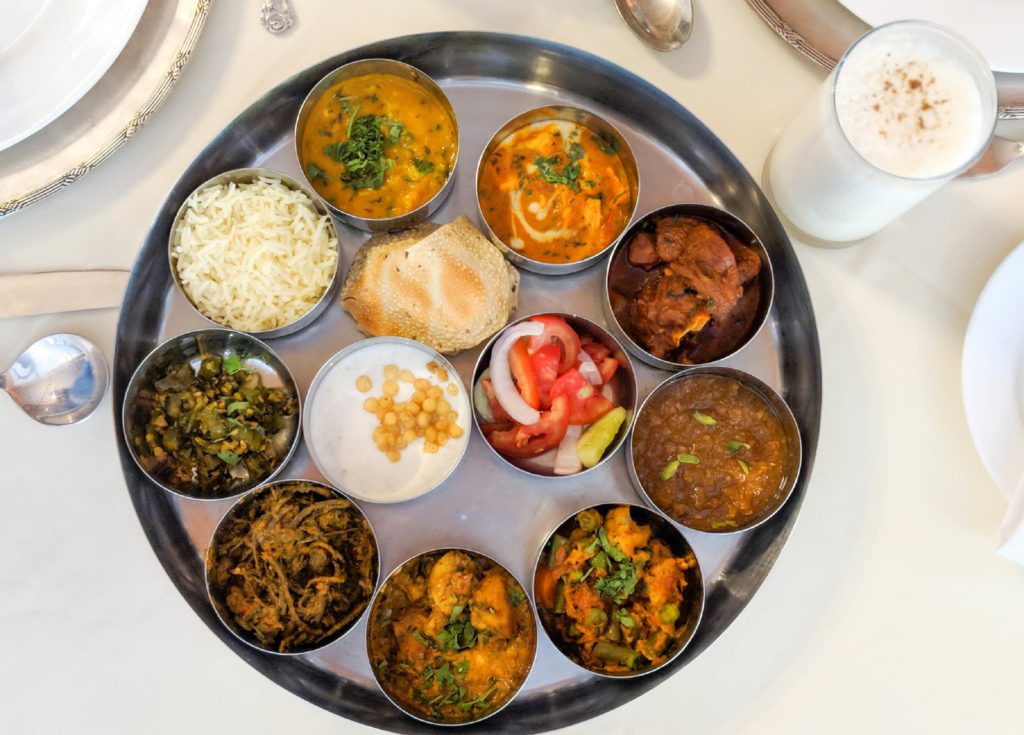
Regal Repast
While the royals had a love for game meat during peacetime, leading to recipes like the popular laal maas (meat cooked with red chillies), times of war gave birth to dishes like bati with ghee, Khad khargosh which employed very few ingredients, was made organically and were long-lasting. The royal cuisine recipes have been preserved over the years and passed on from generations. Marwar food over centuries is a heterogeneous mix of princely inheritance, nomadic culture and a history of warfare. Sayyed Mohasinali, Deputy General Manager, Ranbanka Palace, Jodhpur says, “Rajput recipes vary from the spartan to the luxurious, depending on how and when the meal was cooked. Different vegetarian and non-vegetarian dishes cooked in an assortment of spices are an integral part of Marwari cuisine. There are hundreds of recipes that the kitchen rotates with the changing seasons. Some of the highlighted dishes are khad kargosh, laal mass, daal bati churma, ker sangri and the like.”
Making it Matter
India is a land of kings and emperors, also known for its hospitality that is the essence of its deep-rooted culture. Royal food will continue to hold its charm for us because they remind us of an era spangled with glory and grandeur. “With the need to save these recipes from languishing, we are on the pathway to introduce some of these long lost dishes on the menu of our signature Zarin restaurant at the Fairmont, Jaipur in an initiative that will help us reflect on the rich cultural heritage that they are a part of. We take cue from three rich dynasties across India and explore the kitchens of these opulent empires – Mewars of Rajasthan, Nizams of Hyderabad and Nawabs of Awadh. Mewari cuisine is mostly simple, rural and very delicious and is prepared using fresh vegetables, fruits and meats. The Nizams of Hyderabad patronized expert artisans that bring to mind romance and fabulous wealth. Lucknow is full of fantastic legends of food, and within these legends lies the secrets of lost and forgotten recipes from the fascinating culinary heritage. The bawarchis and khansamas of Awadh were the ones who first brought the concept of the ‘dum’ style of cooking or the art of cooking over a slow fire,” says Prasad Metrani, Executive Chef, Fairmont Jaipur. “It is extremely important that royal food is preserved and showcased to the current generation as Rajput warriors have been known to be the strongest is the history. It is for one very simple reason, which is because they consumed local ingredients such as ker, sangria, bajra etc. Also the way the dishes were cooked. The royal kitchen at Ranbanka Palace has retained this old world charm and ways of cooking on open fire and in hot sand where the dish gets slow cooked in its own juices; Simple, fresh, aromatic and healthy with a throw-back to tradition,” adds Mohasinali.
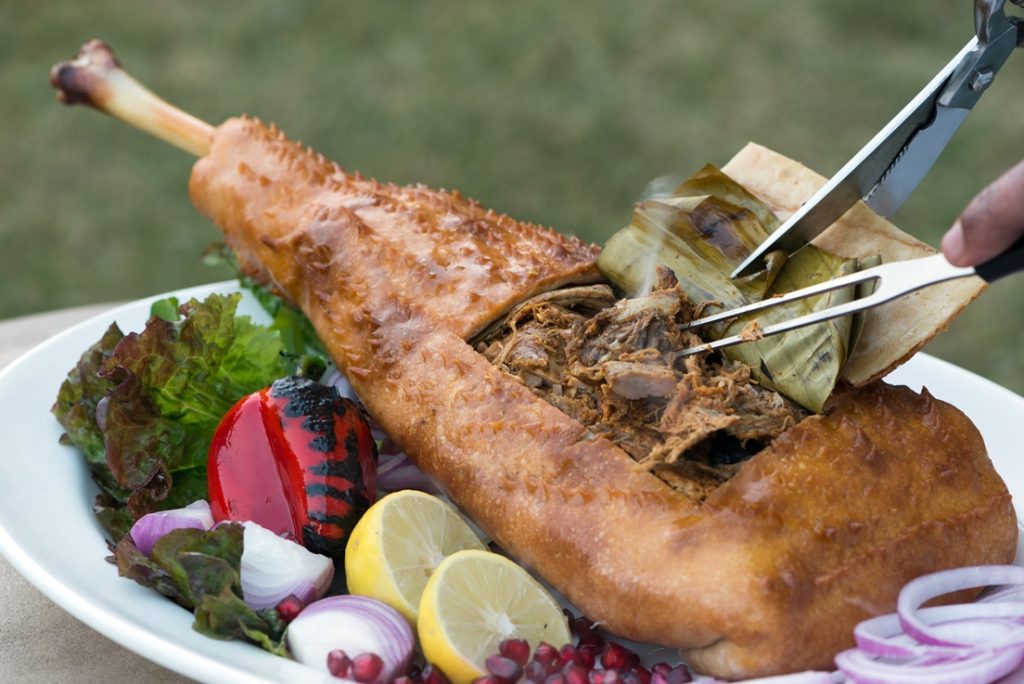
Research Cues
Naturally when reinterpreting and representing royal food, the basis is good, solid research. As part of its Kitchens of India promotions, ITC Hotels has ensured that all the heritage cuisine they have showcased is through diligent research, workshops and food tastings. “After we choose a royal cuisine, we first and foremost conduct a food tasting to ensure the quality, flavours and authenticity of the cuisine. We approach royalty (on occasions they approach us) to check on the variety as well as the availability of recipes. We then start the trial sessions with our chefs and the royal kitchen staff members. Once we are satisfied with the right flavours and perfect recipes, we decide on our promotion details,” says Ajit Bangera, Senior Executive Chef, ITC Grand Chola. ITC has closely associated with the Royalty of Arcot to showcase their cuisine under the aegis of Kitchens of India at the hotel. “After a couple of visits to the royal kitchen of Amir Mahal (residence of the current Prince of Arcot), exchange of research material, cooking sessions along with their chefs and our in-house expertise, we presented the Cuisine of Arcot which is mainly derived from the Carnatic region, a blend of Mughlai and Maharatta cuisine, with prominent usage of local spices, slow cooking and balanced flavours of spices and condiments with liberal use of ghee and gingelly oil. The delicacies consist of wide varieties like ‘biryani’-the famous one is known as Arcot Biryani which is a popular part of Andhra cuisine. Kebabs and sea food are also the part of the Nawabi gastronomical fare. The cuisine is not spicy though it has an aroma of its own,” adds Bangera. In fact, I recently had the good fortune of sampling a royal meal inspired from the royal kitchens of the kingdom of Thanjavur with Abaji Rajah Bhonsle, the younger brother of the present king Rajah Bhonsle of Thanjavur and Praveen Anand, executive chef of South Indian cuisine at ITC Hotels that showcased the kingdom’s rich and varied cuisine. Sampling a thaali filled with flavours the food was simple and yet its flavours came out clearly and it was a meal that I will never forget. So the next time you are out for a meal, make a regal choice, it is sure to make your taste buds feel like royalty.
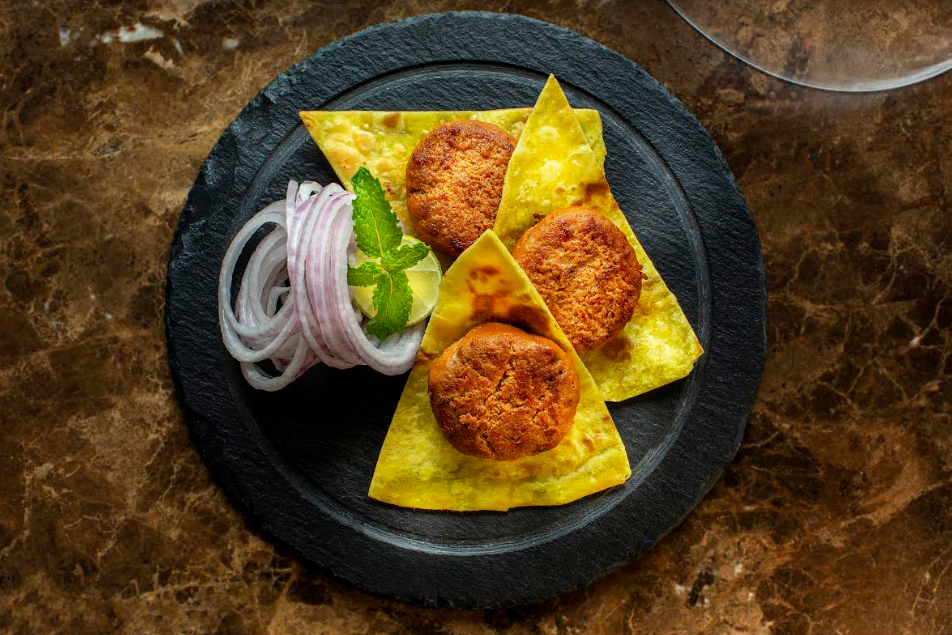
Galouti Kabab (Courtesy Conrad Bengaluru)
Ingredients
- 1/2 kg mutton ( mutton leg 20 time minced)
- 1/2 tsp salt
- 1/2 tsp red chilli powder
- 1/2 tsp kebab chini powder
- 1 tsp raw papaya paste
- 1/2 tsp garam masala powder
- 1 tsp ginger and garlic paste
- 1/2 tsp saffron (mixed in warm milk)
- 1 tsp browned onion, paste
- 1 tsp gram flour (besan)
- 1 tsp desi ghee
- 1 tsp gulab jal
- A dash of food ittar
- 3 tsp brown cashewnut
Method
- Add to the minced meat, salt, chilly, kebab chini, green papaya paste, garam masala, ginger-garlic paste, onion paste, brown cashewnut paste saffron, desi ghee, gulab jal and a dash of ittar.
- Mix it all together and very finely. Mixing is a very important part of this recipe.
- Once done, heat 1 tsp ghee in a pan. Make flattened rounds of the mixture. You can use little water so that the meat does not stick to your hands.
- Fry the kebabs. Serve hot.
This story first appeared in Smartlife Magazine’s January 2020 issue here:
